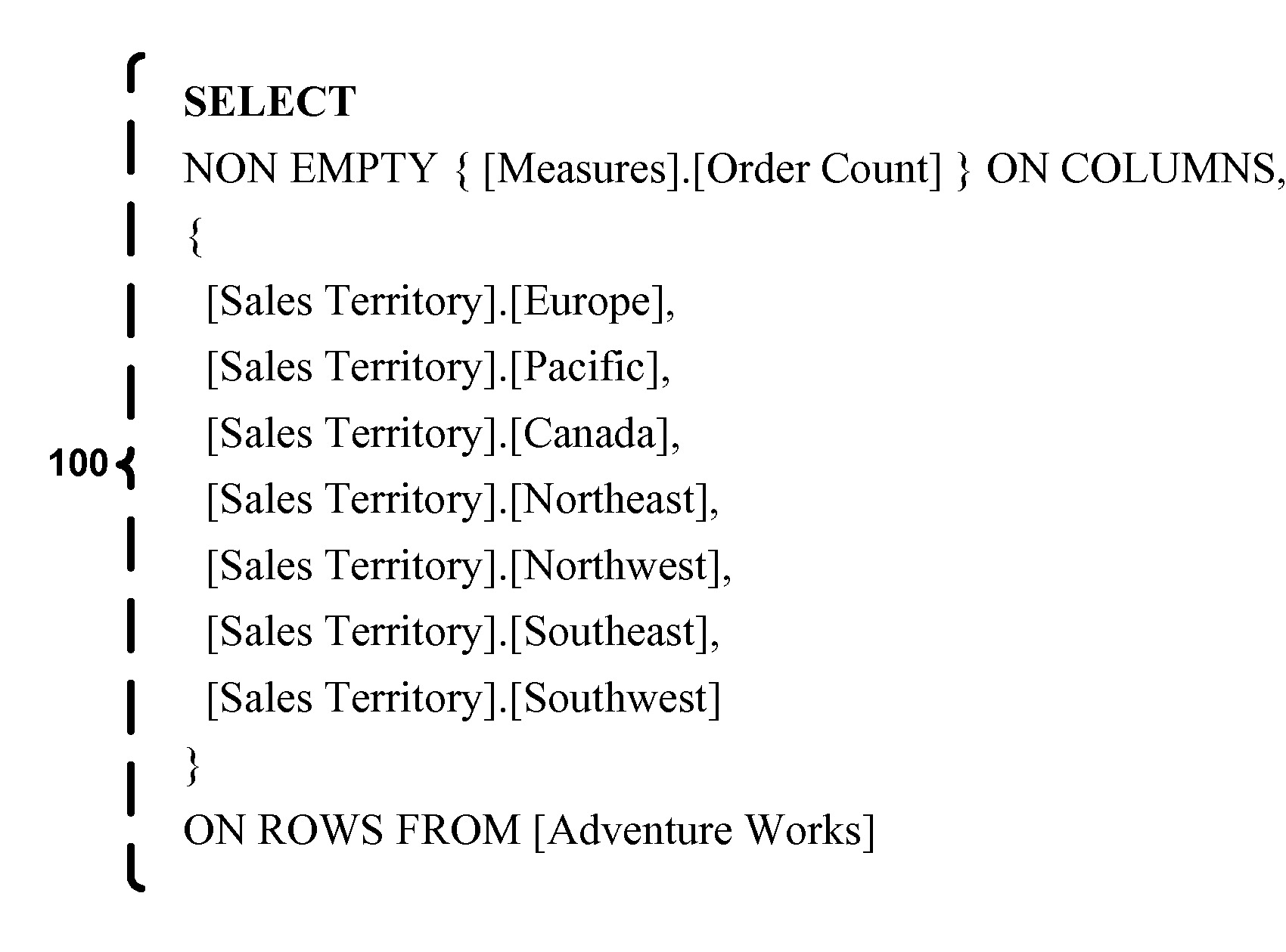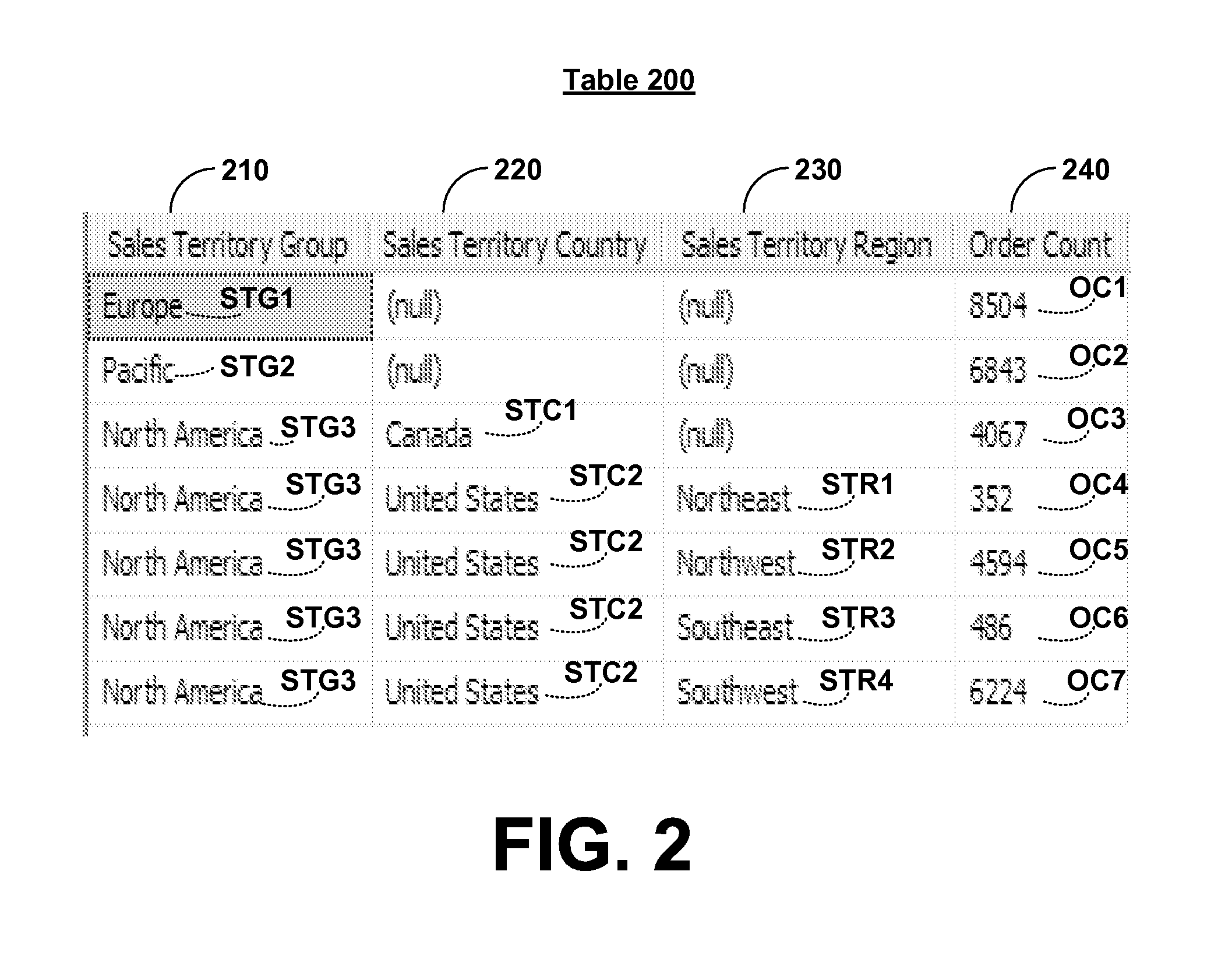Re-categorization of aggregate data as detail data and automated re-categorization based on data usage context
a technology of aggregate data and detail data, applied in the field of data categorization, can solve the problems of complex writing of queries, no way to re-categorize aggregate data, and the list of every transaction does little good to the ceo of the company, so as to achieve the effect of increasing flexibility
- Summary
- Abstract
- Description
- Claims
- Application Information
AI Technical Summary
Benefits of technology
Problems solved by technology
Method used
Image
Examples
Embodiment Construction
Overview of Re-Categorizing Aggregate Data as Detail Data
[0024]As mentioned in the background, there are a variety of situations when reporting data from relational databases, where output or report data, to be useful as a result, is grouped and / or aggregated by a user or application, to distinguish the aggregate result from the underlying detail data upon which the aggregate result is based. In such relational systems, the aggregate result is designated as aggregate data. Other systems, such as OLAP systems, have particular strengths because of their pre-computed or custom aggregations performed in the background, saving valuable query processing time in certain circumstances. With such OLAP systems, instead of calculating custom aggregate results based on underlying detail data, the queries enable explicit specification of which data including pre-computed aggregate data should be shown in the result set (at potentially varying aggregation levels).
[0025]However, there is no way in...
PUM
 Login to View More
Login to View More Abstract
Description
Claims
Application Information
 Login to View More
Login to View More - R&D
- Intellectual Property
- Life Sciences
- Materials
- Tech Scout
- Unparalleled Data Quality
- Higher Quality Content
- 60% Fewer Hallucinations
Browse by: Latest US Patents, China's latest patents, Technical Efficacy Thesaurus, Application Domain, Technology Topic, Popular Technical Reports.
© 2025 PatSnap. All rights reserved.Legal|Privacy policy|Modern Slavery Act Transparency Statement|Sitemap|About US| Contact US: help@patsnap.com



